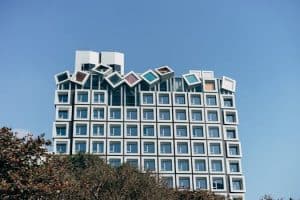Adaptive Reuse: Churches Turned Luxury Residences
If you’ve ever walked through a historic downtown area, chances are you’ve come across a grand church with stunning architecture, towering steeples, and intricate stained-glass windows. These religious sanctuaries have long been a cornerstone in many communities, but with declining attendance and upkeep costs, many churches are forced to shut their doors. However, a new trend has emerged in the world of luxury real estate – the adaptive reuse of churches. With the right vision and design, these once holy spaces are being transformed into high-end residences that offer a unique blend of old-world charm and modern luxury.
The Rise of Adaptive Reuse
The concept of adaptive reuse involves the transformation of an existing building for a new purpose. This practice has gained momentum in recent years as a way to preserve historic structures while also meeting the demands of a growing population. According to a report by the National Trust for Historic Preservation, adaptive reuse projects have increased by 33% since 2010, with churches being one of the most popular building types for this type of renovation.
A New Life for Churches
Many urban areas are experiencing a revitalization with a surge in new development and a desire for unique and character-filled living spaces. This has led to the repurposing of old factories, hotels, and now, churches. These grand structures are prime candidates for adaptive reuse as they often have large open spaces, high ceilings, and expansive windows – all coveted features in luxury living.
Churches also offer a sense of history and charm that cannot be replicated in modern construction. With ornate details and craftsmanship, these buildings are a window into the past. By converting them into luxury residences, developers are able to preserve and highlight these architectural elements, giving the resulting homes a unique and special character.
A New Level of Luxury
The transformation of a church into a luxury residence involves much more than just converting pews into seating and altars into kitchen islands. These projects require a careful balance of preserving the original character of the building while incorporating modern amenities and design elements.
One of the main challenges in adaptive reuse projects is creating a functional layout. When dealing with a grand open space, designers must come up with creative solutions to divide the space into separate rooms without sacrificing the flow and overall aesthetic. This often involves using non-traditional walls or partitions, such as bookshelves or curtains, to maintain the openness of the space.
Another key aspect of the luxury conversion process is finding ways to seamlessly integrate modern features and technology into the historic framework of the building. This can include installing state-of-the-art appliances, smart home systems, and energy-efficient upgrades, all while working within the confines of the existing structure.
The Appeal of Church Living
Living in a converted church offers a one-of-a-kind experience that can’t be found in a traditional luxury home. The grandeur of the building, with its soaring ceilings and ornate details, creates a sense of history and character that is unmatched. In addition, many of these churches are located in desirable downtown areas, offering a convenient and vibrant lifestyle for residents.
There is also a certain exclusivity associated with church residences. With only a limited number of units available, these homes are highly coveted and often come with a hefty price tag. This exclusivity and unique living experience are major draws for high-end buyers looking for something different and prestigious.
The Future of Adaptive Reuse
The trend of converting churches into luxury residences shows no signs of slowing down. In fact, with the increasing demand for unique and sustainable living spaces, it is expected to continue to grow. As more and more churches are being repurposed, it is important for developers and designers to approach these projects with sensitivity and respect for the history and cultural significance of these buildings.
The adaptive reuse of churches into luxury residences is just one example of how old buildings can be given new life and contribute to the ongoing revitalization of urban areas. With the right design and vision, these once sacred spaces can continue to serve the community in a new and innovative way – as stunning and sought-after homes for the most discerning buyers.










